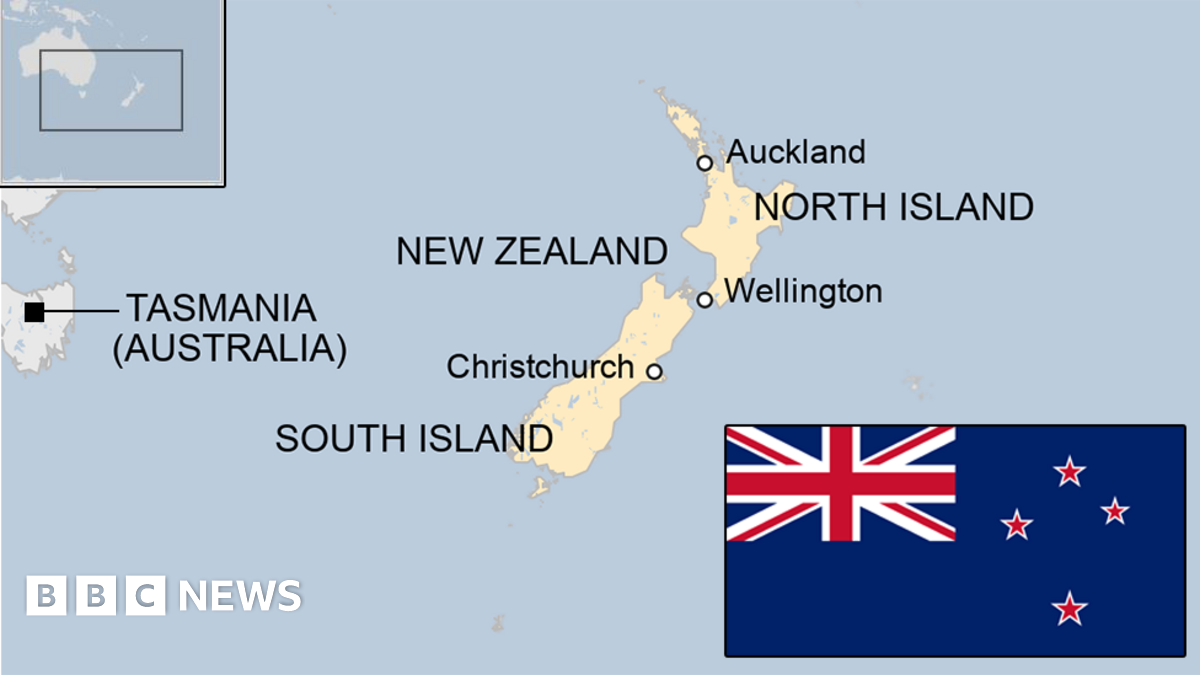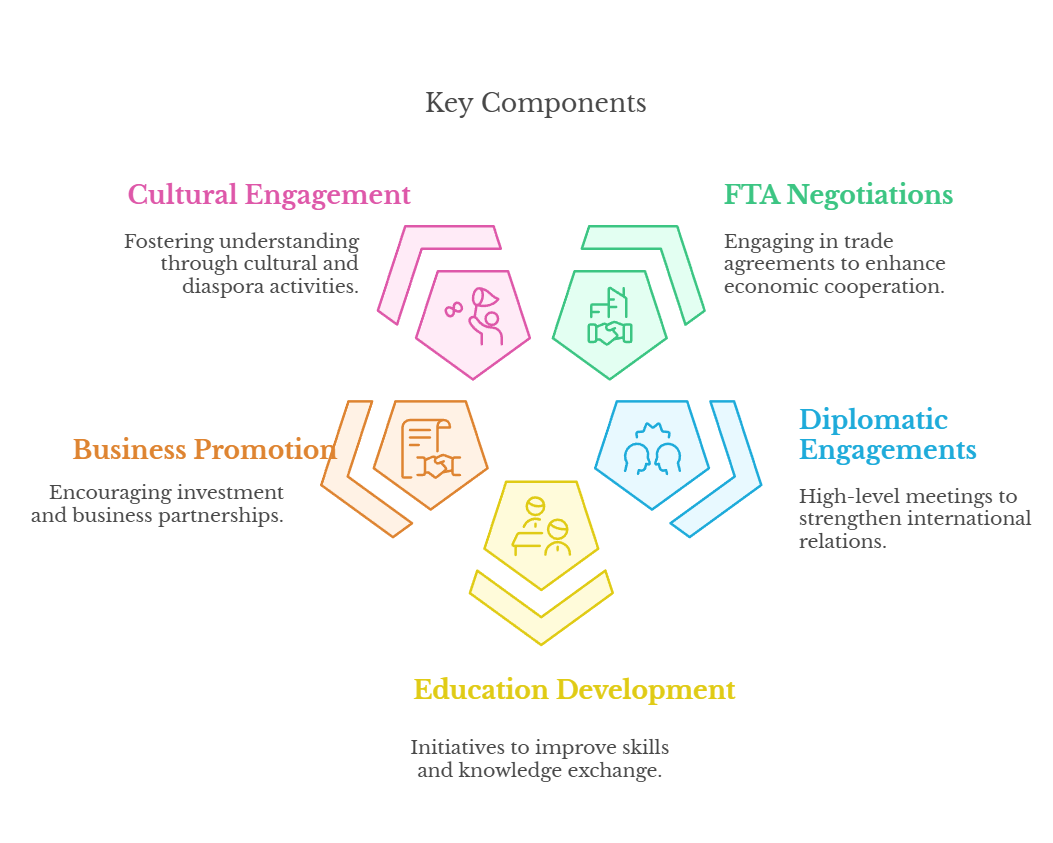India-New Zealand Relations | 19 Mar 2025
For Prelims: Raisina Dialogue, Authorized Economic Operators Mutual Recognition Arrangement (AEO-MRA), Indo-Pacific Oceans Initiative (IPOI), Digital Economy, Opening Doors to India Policy, Sanitary and Phytosanitary (SPS), Nuclear Suppliers Group (NSG).
For Mains: Key highlights of India-New Zealand relations, associated challenges and way forward.
Why in News?
The Prime Minister (PM) of New Zealand (NZ) made an official visit to India, held bilateral talks with India's PM, and issued India-New Zealand Joint Statement.
- The NZ Prime Minister attended the 10th Raisina Dialogue as the Chief Guest and delivered the Inaugural Keynote Address.
What are the Key Highlights of the India-New Zealand Joint Statement?
- Economic Cooperation: Both sides agreed to launch negotiations for a balanced, ambitious, and mutually beneficial trade agreement as per the NZ’s “Opening Doors to India” Policy.
- The Authorized Economic Operators Mutual Recognition Arrangement (AEO-MRA) was signed to ease the movement of goods between the two countries.
- Security Cooperation: A defense cooperation MoU was signed for regular engagements like military exercises and naval visits and NZ expressed interest in joining India's Indo-Pacific Oceans Initiative (IPOI).
- Global Cooperation: Both countries pledged to uphold a free, inclusive, and stable Indo-Pacific, supporting rules-based order and navigation freedom under UNCLOS.
- NZ endorsed India’s candidature for permanent membership in a reformed UN Security Council and supported its entry into the Nuclear Suppliers Group (NSG).
- Climate Change: NZ reaffirmed support for India's ISA, joined CDRI, and agreed to cooperate on SDGs, the Paris Climate Agreement and the Sendai Framework for Disaster Risk Reduction.
- Education and Sports: A renewed Education Cooperation Arrangement and a Sports Cooperation MoU were signed to strengthen academic partnerships, student exchanges, and sporting ties, with plans to celebrate 100 years of sports relations in 2026.
- Diaspora: Both leaders acknowledged the Indian diaspora’s role (6% of NZ’s population), for strengthening ties and committed to ensuring the safety of students and tourists.
- India raised concerns about pro-Khalistan activities in NZ, highlighting anti-India actions by certain illegal elements.
| Click Here to Read: What is Raisina Dialogue? |
Why Are India and New Zealand Important to Each Other?
India’s Importance for New Zealand
- Expanding Economic Partnerships: With a 1.4 billion population, a growing middle class, and an expanding services sector, India offers New Zealand significant opportunities in export of agricultural products, dairy, meat, wine, and collaborations in digital services.
- Skilled Workforce: India is NZ’s largest source of skilled migrants and 2nd-largest source of international students, with its professionals in IT, engineering, and healthcare helping address NZ’s skill shortages.
- Digital Economy: With 880 million internet users and leading global data consumption, India is a major digital economy, presenting NZ’s tech firms opportunities for IT, AI, fintech, and digital commerce collaborations.
- Strategic Cooperation: India's growing influence in the Indo-Pacific supports New Zealand's goal of regional stability, and strengthens its strategic position.
New Zealand’s Importance for India
- Advanced Farming Practices: New Zealand’s expertise in dairy and horticulture can support India’s farm modernization, while collaboration in food processing and logistics strengthens food security.
- Skill Development: NZ’s top-tier education attracts Indian students, while its vocational training programs can help India address its skill gaps and improve employability.
- Clean Energy: New Zealand’s expertise in climate technology and sustainability supports India’s low-carbon transition, with its firms recognized in HolonIQ’s Indo-Pacific Climate Tech 100.
- HolonIQ's Indo-Pacific Climate Tech 100 honors top climate tech startups across 14 IPEF partner countries annually.
- Lucrative Market: New Zealand's vast EEZ and maritime security concerns make it a potential buyer of India’s surveillance systems, patrol boats, and radars amid China’s Pacific expansion.
- New Zealand’s demand for organic, sustainable, handcrafted goods aligns with India’s premium silk, wool, and artisanal products.
What is New Zealand’s “Opening Doors to India” Policy?
- New Zealand’s Opening Doors to India policy is a strategic initiative launched in 2011 to strengthen New Zealand’s economic, political, and cultural ties with India.
- Key Components:
What are the Challenges in India-New Zealand Relations?
- Stalled FTA Negotiations: Free Trade Agreement (FTA) talks began in 2010 but stalled in 2015 due to India’s high tariffs on New Zealand’s dairy and agricultural exports to protect its local industry.
- Non-Tariff Barriers (NTBs): Indian exports like grapes, okra, and mangoes face Sanitary and Phytosanitary (SPS) barriers in New Zealand, while the lack of an Mutual Recognition Arrangement (MRA) for standards and certifications further complicates trade.
- Low Trade Volumes: In 2023-24, NZ’s trade with India totaled only USD 1.75 billion, with exports of USD 0.84 billion and imports of USD 0.91 billion.
- Limited Market Awareness: Market complexities hinder New Zealand’s trade with India, while India sees New Zealand mainly for tourism, overlooking its strengths in innovation, technology, and sustainability.
- Geopolitical Differences: New Zealand’s foreign policy is shaped by allies like Australia and the US, while its economic reliance on China may lead to differences with India on regional security and trade.
Way Forward
- Conclude FTA Negotiations: Addressing dairy and tariff disputes through dialogue, pursuing an Early Harvest Agreement, and focusing on sector-specific deals in horticulture, pharma, and tech can boost trade and FTA progress.
- For the time being both can sign an interim FTA similar to India-Australia ECTA.
- Enhance Market Access: Fast-track an MRA for standards, reduce NTBs through technical cooperation, and boost market awareness via trade fairs, business delegations, and workshops.
- Climate Change and Sustainability: Leverage New Zealand’s climate tech and renewable energy expertise for India’s clean transition, strengthen disaster resilience through CDRI, and collaborate on sustainable farming and food security.
- Defense Cooperation: Enhance cooperation under IPOI for regional stability, strengthen maritime security through joint exercises and intelligence sharing, and collaborate on counter-terrorism efforts.
|
Drishti Mains Question: Examine the key challenges in India-New Zealand relations and propose measures to strengthen cooperation. |
UPSC Civil Services Examination, Previous Year Question (PYQ)
Mains
Q. The new tri-nation partnership AUKUS is aimed at countering China’s ambitions in the Indo-Pacific region. Is it going to supersede the existing partnerships in the region? Discuss the strength and impact of AUKUS in the present scenario. (2021)
Q. Quadrilateral Security Dialogue (Quad) is transforming itself into a trade bloc from a military alliance, in present times Discuss. (2020)


